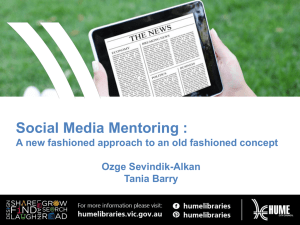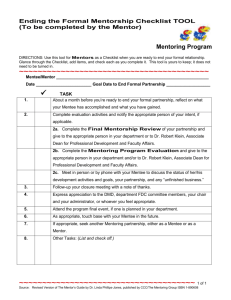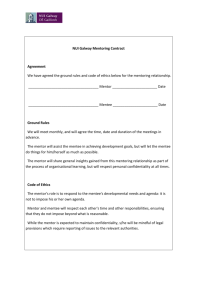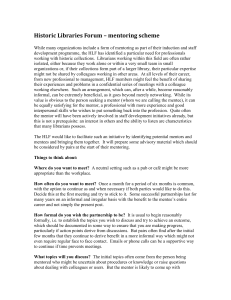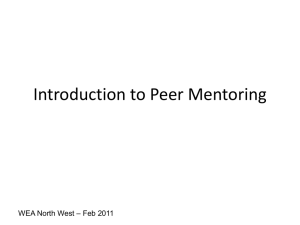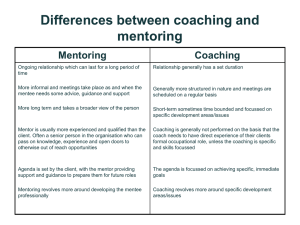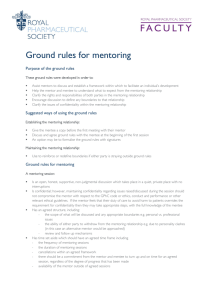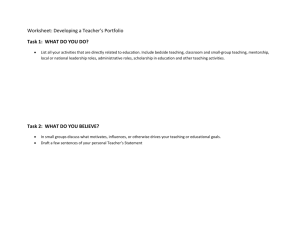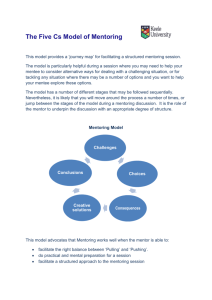Personal Learning Theory, A Corporate Perspective
advertisement
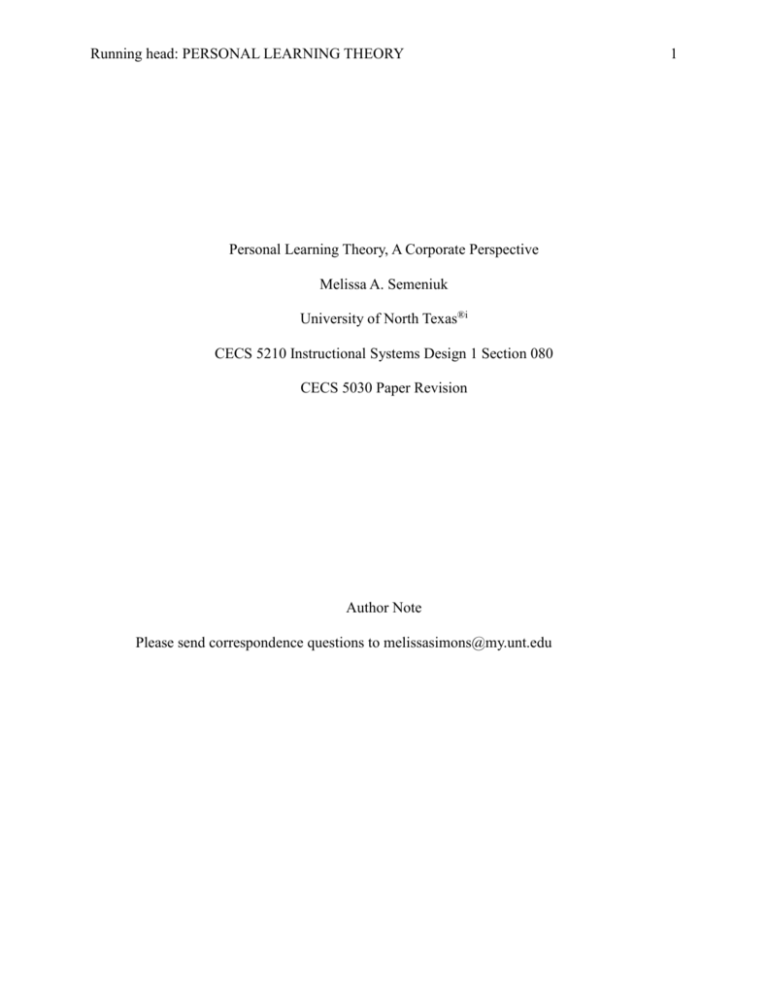
Running head: PERSONAL LEARNING THEORY Personal Learning Theory, A Corporate Perspective Melissa A. Semeniuk University of North Texas®i CECS 5210 Instructional Systems Design 1 Section 080 CECS 5030 Paper Revision Author Note Please send correspondence questions to melissasimons@my.unt.edu 1 PERSONAL LEARNING THEORY 2 Personal Learning Theory, A Corporate Perspective The Corporate Environment Personal Learning Theory Influence Evident generational gaps within the corporate environment increase the demands upon the human resource department to determine an organizational need and capture human performance strategies and knowledge bases amongst a retiring generation. In turn, internal individual business units develop employee specific training and performance programs hiring or using internal learning and development facilitators, instructional designers, learning and development advisors or professionals. The corporate learning and development atmosphere suits flexible frameworks aligning with theoretical methodologies. The learning and development framework must consider global cultural diversity, telecommuting, technology adaptations, and work environmental factors such as field or office employees. Technology advancements increase connections between subject matter experts and new employees. A web 2.0 or 3.0 tool integrates digital communication and decreases hierarchal boundaries and increases transparent communication between an employee, supervisor, or a team. In essence, introducing mentor and mentee practices inside a business strategy aligns various knowledge bases and networking practices. Therefore, learning from experience subject matter experts (SME) to peer, peer to peer, mentee to mentor, decreases the employee’s performance gap and the increases employee’s business base knowledge and confidence. Corporate Environment Personal Theory A corporate theory translates into aligning various learning theories integrating into the Community of Practice theory supporting individual constructivist methods. For example, PERSONAL LEARNING THEORY constructivist suggests the learner actively engages, constructs, or scaffolds new ideas building knowledge (Cunningham & Duffy, 1996). Multimedia and online environments offer user engagement providing self-discovery methods increasing self-efficacy (Bandura, 1977). A correct instructional design system develops a positive user experience translating into memory recall and cognitive process focus. Corporation’s technological integration should encompass different theoretical frameworks inside mobile devices, visual literacy, and various computer bases training, digital technology, and learning management systems. However, corporations must consider a theoretical framework is focusing on learning and development instructional goals, business goals, learning strategies and learning objectives before producing implementation phases. To summarize, a learning theory compels individual learning cognition processes and developing behaviors. In turn, technology user interfaces functions should express the learning framework. A goal or objective stimulates or creates short-term or long-term memory associations clearly communicating a learning strategy influencing individual performance, social connections, or tangible application. Siemens connectivism theory suggests learning connects various nodes through a network, “Learning is the process of creating networks. Nodes are external entities which we can use to form a network” (Siemens, 2006, p. 29). Historical documents reference early and current mentor and mentee relationship patterns and practices using the community of practice theory (Lave & Wenger, 1991). Wegner (2000) suggests, “Since the beginning of history, human beings have formed communities that share cultural practices reflecting their collective learning” (Communities of Practice, p. 229). To paraphrase, learning includes scaffolding knowledge using real-world strategies or experiencing different 3 PERSONAL LEARNING THEORY 4 environments (Merrill, 2002). In turn, community or social practices interrelate in a corporation business environment, global networks and connecting extensive knowledge. In addition, a mentor and mentee relationship, Srivastava, & Thakur (2013) explains, “It involves both Individual attributes (psychological) as well as environmental attributes (sociological)” (p.16). The relationship between the mentor and mentee proceeds beyond a casual meeting. Mentorship practices emphasize career goals identifying performance gaps and promote motivating behaviors and trust. Templeton & Tremont (2014) proposes, “…using mentoring as a form of job-embedded training that aligns professional development” (Abstract, p.54). Mentoring business strategies balance individual growth opportunities. A community of practices theory assembles various learning frameworks expressing a constructivist method. A knowledge gap or behavior identifies and redirect a goal or develops a learning pattern. A mentee becomes a mentor transferring knowledge to the next employee or generation – it is a cyclic relationship. Fundamentally, technology networks connect different employee skill sets and knowledge bases increasing mentoring opportunities and practices globally reaching a corresponding employee across different business units. In conclusion, multimedia educational technology provides learners exploration and selfdiscovery opportunities during contextual engagement and social connections. Each connection, either social or contextual, solidifies and introduces new concepts changing empirical views guiding the learner. As technology integrates into the learner’s everyday activity, instructional design system models and theories must adapt fitting the learner’s environment. Corporations should consider designing key theoretical instructional design frameworks and models combining mentor and mentee practices aligning with common business goals. In other words, educating and mentoring internal employees is a future solid investment. PERSONAL LEARNING THEORY 5 References Cunningham, D., & Duffy, T. (1996). Constructivism: Implications for the design and delivery of instruction. Handbook of Research for Educational Communications and Technology, 2, (pp.170-198). Bandura, A. (1977). Self-efficacy: toward a unifying theory of behavioral change. Psychological review,84(2), 191. Merrill, M. D. (2002). First principles of instruction. Educational Technology Research & Development, 50, 43-59. doi: 10.1007/BF02505024 Semens, G. (2006). Knowing knowledge (pp. 1-163). EBook: Creative Commons License. Retrieved June 29, 2014, from http://www.elearnspace.org/KnowingKnowledge_LowRes.pdf Srivastava, S., & Thakur, M. (2013). Mentoring and performance: testing a mediated model in supervisory and formal mentoring in business organisation. International Journal Of Business Insights & Transformation, 6(2), 16-35. Templeton, N. R., & Tremont, J. W. (2014). Applying business lessons to education: mentoring as job-embedded professional development. International Journal Of Organizational Innovation, 6(4), 54-59. Wenger, E. (2000). Communities of practice and social learning systems. Organization, 7: 225246. doi:10.1177/135050840072002. i University of North Texas state university TEXAS 1501 Chestnut Street Denton TEXAS 76203
